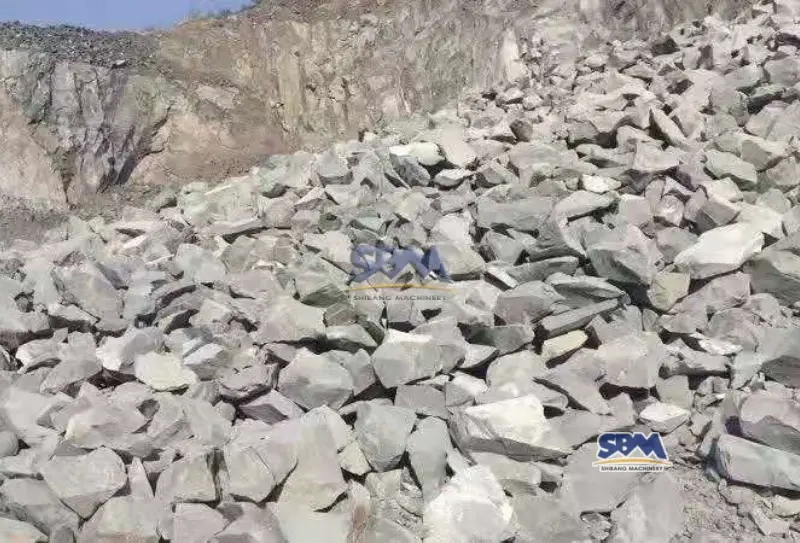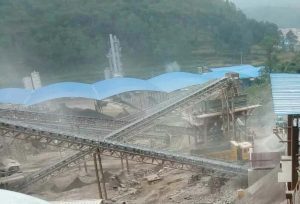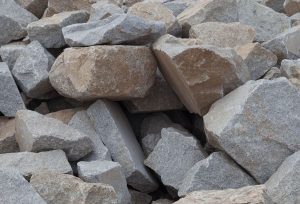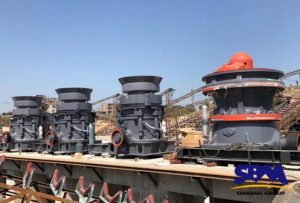Email: [email protected]
Dolomite
Main Contents
Forget rare gems – the real rock shaping your world is dolomite. This tough, pale mineral isn’t just famous for Italy’s jagged mountains; it’s the hidden hero under your feet, in your house, and growing your food. Found under old ocean floors worldwide – from Canada’s Niagara cliffs to Thailand’s mines – getting dolomite means hard work: blasting, hauling, and crushing it with tough machines built to handle its grit. We count on it for everything: strong roads and concrete, good crop soil needing magnesium, heat-proof furnace bricks, clearer glass, and even the powder in your paint. It’s not fancy, but without dolomite’s quiet strength, modern life would crumble. This is the plain truth about the rock that builds our world.

What Exactly Is Dolomite?
What is a dolomite? Simple breakdown:
- The Mineral: Imagine limestone’s stronger sibling. Its makeup is calcium magnesium carbonate (CaMg(CO₃)₂). Think ancient ocean mud and shells squeezed underground for ages, with added magnesium. Usually creamy white, gray, or soft pink.
- The Rock (or Dolostone): When this mineral fills a rock layer (over half), you get dolomite rock. Experts say “dolostone” to be precise, but most say “dolomite.” It’s harder than regular limestone and doesn’t bubble much in vinegar.
Fun fact: That stunning mountain range in Italy? The Dolomites? Named after this rock. Fitting, since those peaks are basically giant dolomite playgrounds.
Where’s The Dolomite Hiding? (Spoiler: Everywhere)
Where are the dolomite located? Short answer: Ancient seafloors. Wherever shallow, warm oceans existed millions of years ago, dolostone likely formed. Key spots:
- Iconic: Italy’s Dolomites (obviously).
- North America: Niagara Escarpment (Canada/US), Appalachian Basin (PA, NY, VA), Midwest quarries (OH, MI), Nevada deserts.
- Global Players: Spain’s Pyrenees, Austrian Alps, Thailand mines, Australian outback, Brazilian basins.
I’ve stood in quarries from Ohio to Thailand—the rock looks eerily similar. Pale, layered, and tougher than it seems.
Dolomite vs. Limestone: Quick & Dirty Comparison
| Feature | Dolomite Rock | Limestone | Why It Matters |
|---|---|---|---|
| Main Ingredient | Calcium Magnesium Carbonate | Calcium Carbonate | Dolomite adds magnesium |
| Hardness | Harder (Scratches glass) | Softer (Easier to carve) | Better for heavy-duty uses |
| Acid Test | Weak fizz (cold vinegar) | Strong fizz (like soda) | Identifies it in the field |
| Texture | Often “sugary” crystals | Fine-grained or fossil-rich | Affects crushing & polishing |
| Porosity | Can be sponge-like | Varies (often less porous) | Key for oil/gas reservoirs |
What’s Actually In Dolomite?
What is in dolomite? Mostly CaMg(CO₃)₂, but nature loves impurities:
- Iron: Rusty streaks (adds character, weakens purity).
- Silica: Gritty quartz sand (makes it abrasive to crush).
- Leftover Calcite: Incomplete transformation from limestone.
- Trace Metals: Manganese (pink hues), lead, zinc (geologist’s headache).
I’ve seen dolomite so pure it’s snow-white, and stuff so iron-stained it looks like rotten sandstone. Location is everything.
Why We Rip It Out of the Ground: Real-World Uses
What is dolomite used for? Forget vague lists—here’s where it hits your life:
- Under Your Feet: Crushed for road foundations, concrete mix, and train track bedding. That smooth drive? Thank dolomite.
- Farm Soil: “Aglime” fixes sour earth + adds vital magnesium. Plants grow greener quicker. Watched it rescue whole crops.
- Your Kitchen: Polished dolostone stone counters compete with granite. Resists stains better than real marble.
- Steel Factories: Cleanser that removes junk from melted iron. Skip it? Weak steel.
- Window Glass: Lowers heat needed to melt, stops haziness.
- Powder Fillers: In paints, plastics, budget toothpaste. Adds bulk cheaply.
How We Get It: Quarries, Crushers & Sweat
How to get the dolomite? It’s brute force meets precision:
- Blast It: Drill, load explosives, BOOM. Not a quiet job.
- Haul It: Giant dump trucks carry house-sized rocks to crusher. Seen one? Shockingly big.
- Crush It: This is where dolomite crusher prove their worth. This rock wears down weak gear fast.
- Clean & Ship: Screens sort sizes. Washers remove dirt. Then—off to building sites, farms, mills.
Dolomite Crushers: The Unsung Heroes
Let’s talk crushing gear. Dolomite destroys flimsy machines. Why tough crushers win:
- Jaw Crushers: Take the first hit. Swappable plates save the day.
- Cone Crushers: Hardworking pros. Cone shape controls gravel form. SBM’s models change size instantly—key for steady quality.
- Impact Crushers: Hammers pound rock. Good for softer stone, risky for dolostone.
I’ve seen badly kept crushers gasping on dolomite powder. Upkeep isn’t a choice—it’s survival.
Processing Dolomite: Gear That Doesn’t Quit
| Stage | Equipment | Real-World Challenge |
|---|---|---|
| Primary Crush | Jaw Crusher | Swallowing 3-ft boulders without jamming |
| Secondary Crush | Cone Crusher | Shaping aggregate while minimizing dust |
| Tertiary Crush | VSI Crusher | Making cubical sand for premium concrete |
| Screening | Vibrating Screens | Sorting in downpours (yes, it happens) |
| Grinding | Ball Mill | Turning rock into talc-fine aglime powder |
The Future: Gritty & Green
Demand won’t drop—but sustainability is non-negotiable:
- Reclamation: Turning spent quarries into wetlands or parks (seen it work in Germany).
- Dust Control: Modern spray systems beat 1970s “water trucks.” Lung health matters.
- Recycling: Crushing old concrete (full of dolomite aggregate) for new builds.
Parting Thought: Respect the Rock
Dolomite isn’t glamorous. But next time you:
- Drive on smooth asphalt
- See a glass skyscraper
- Taste a juicy tomato (grown in balanced soil)
…remember the pale rock from ancient seas. It’s literal bedrock infrastructure. No AI polish—just hard, essential truth.
Seen dolomites in the wild? Snap a pic! Tag #DolomiteRocks. Let’s celebrate the unsung mineral.



